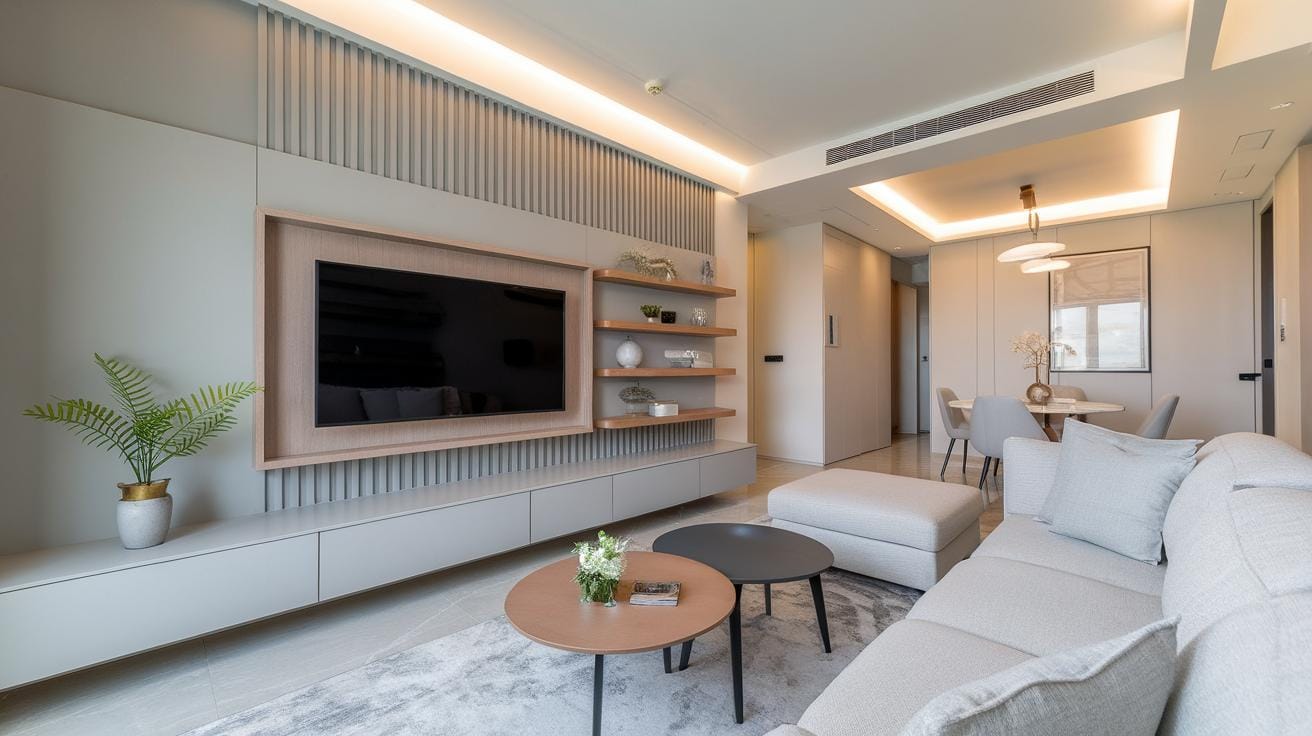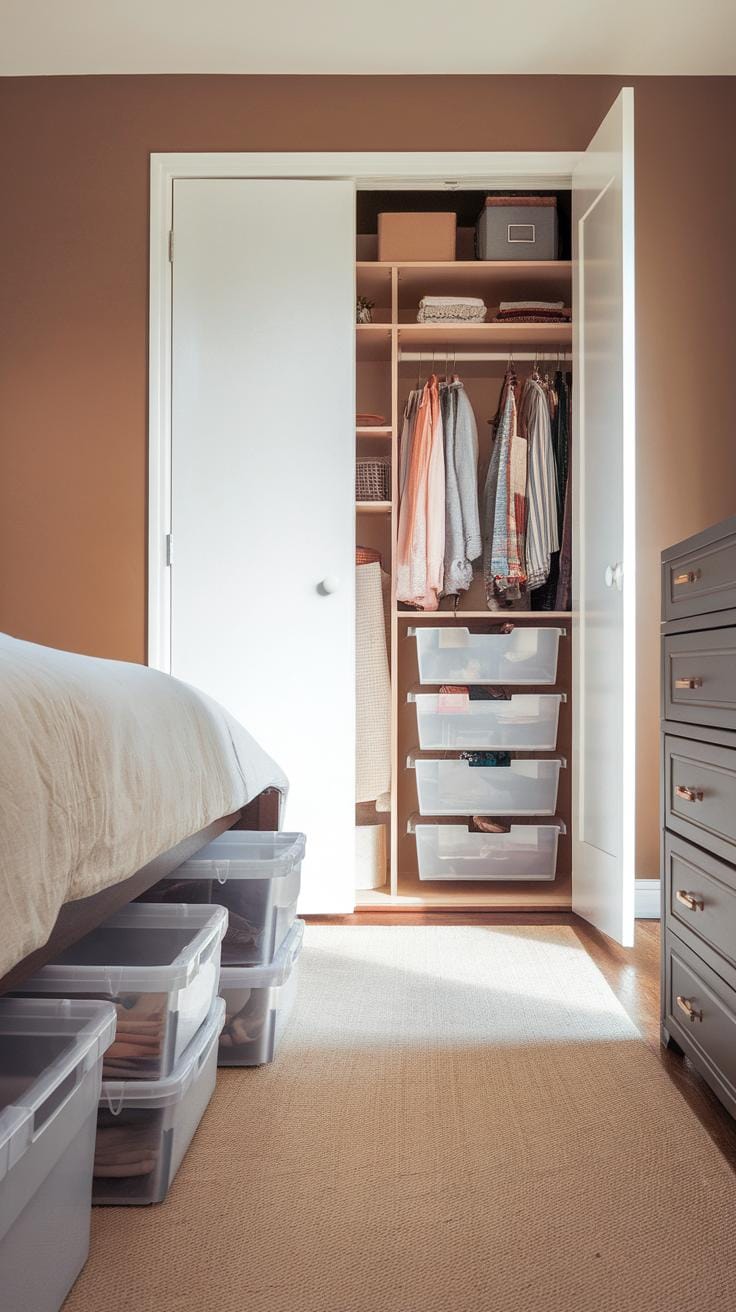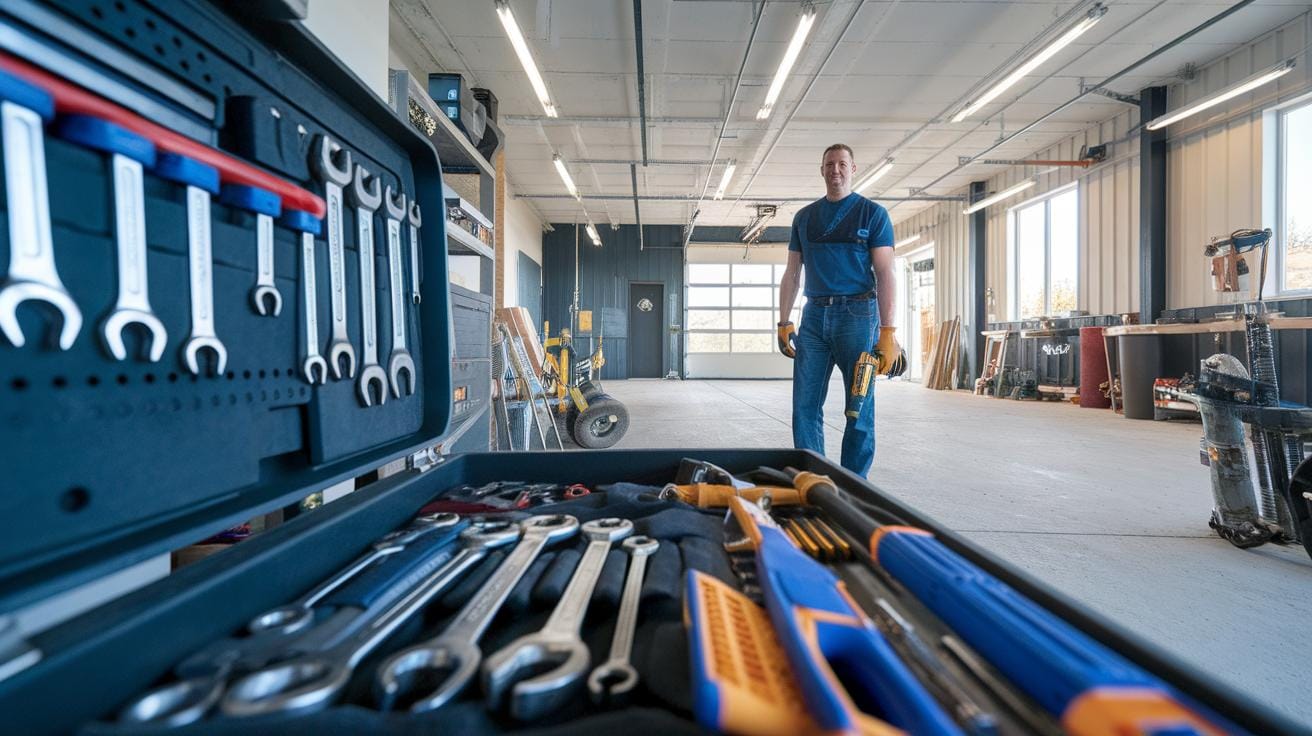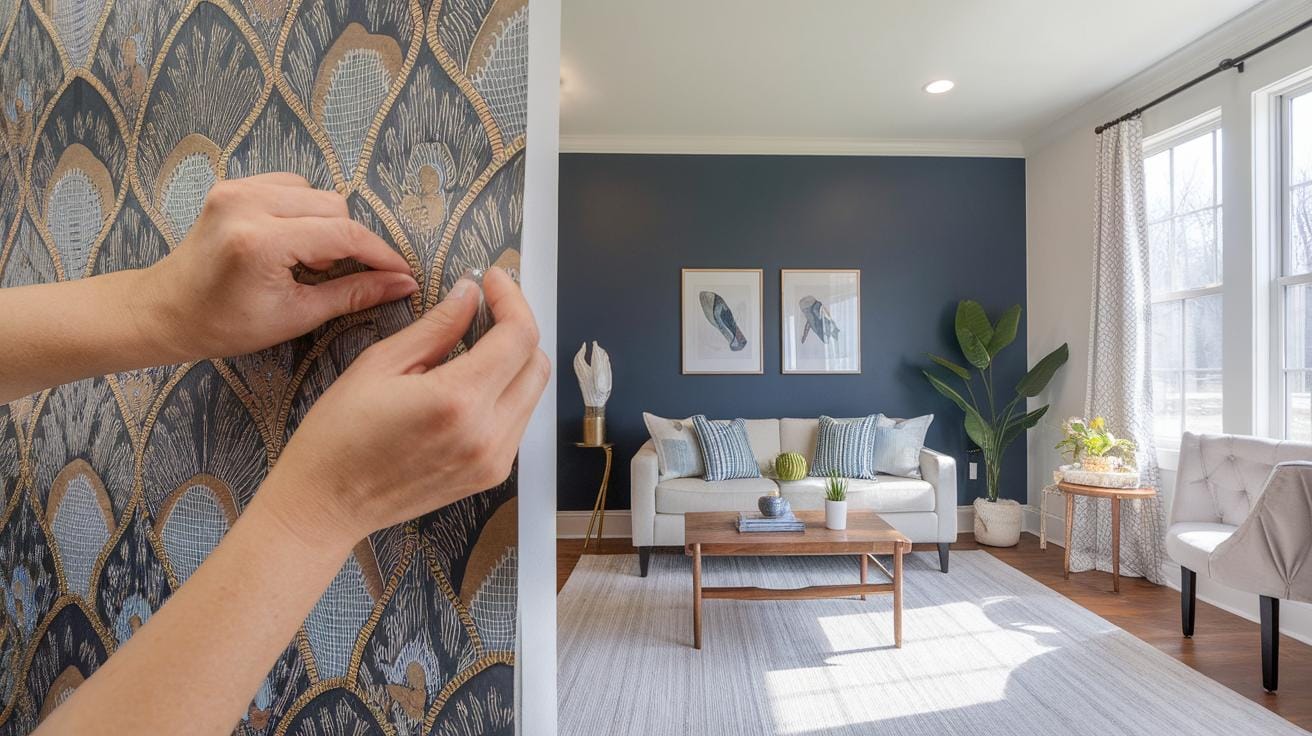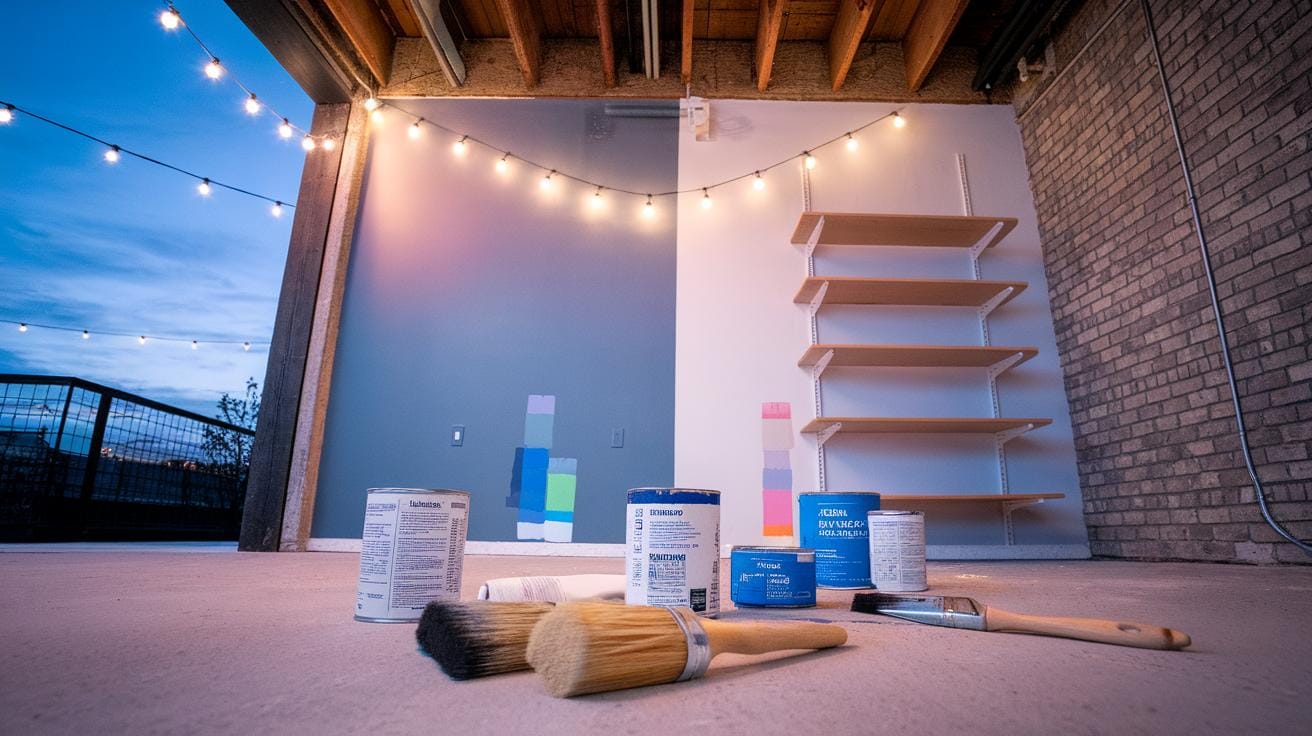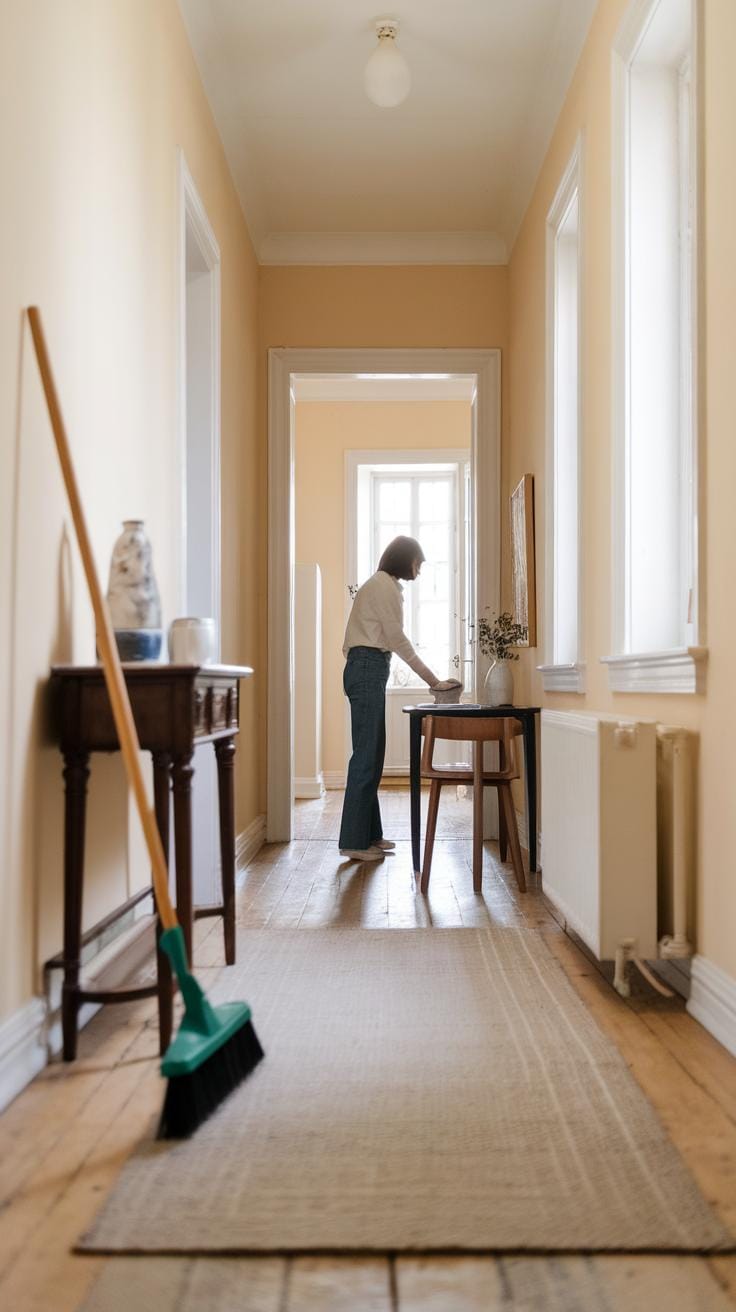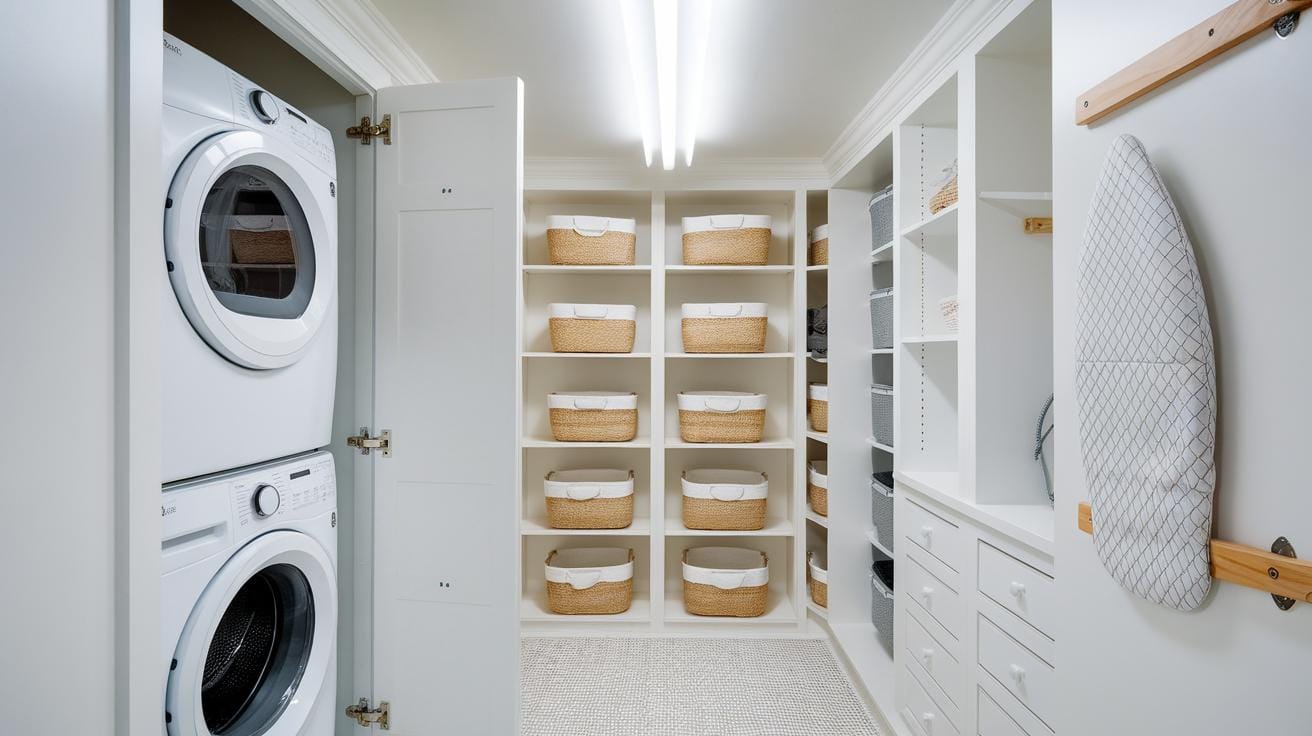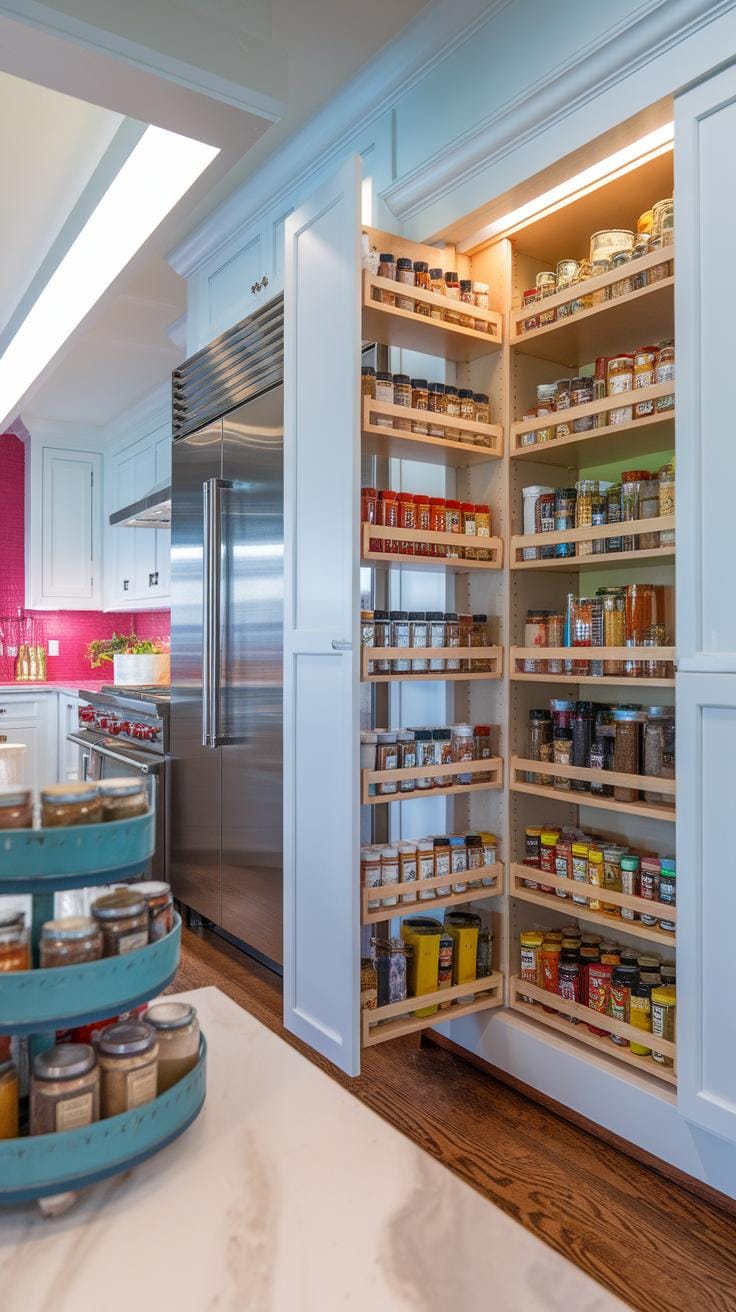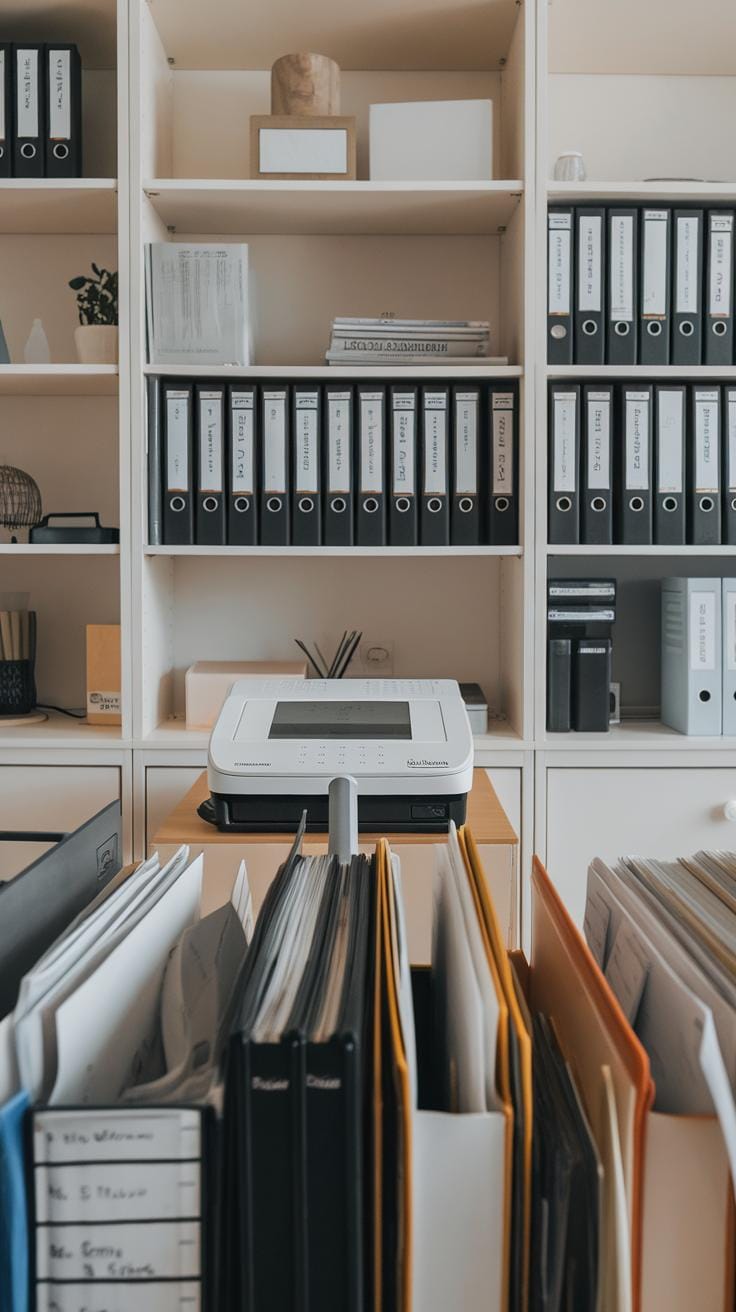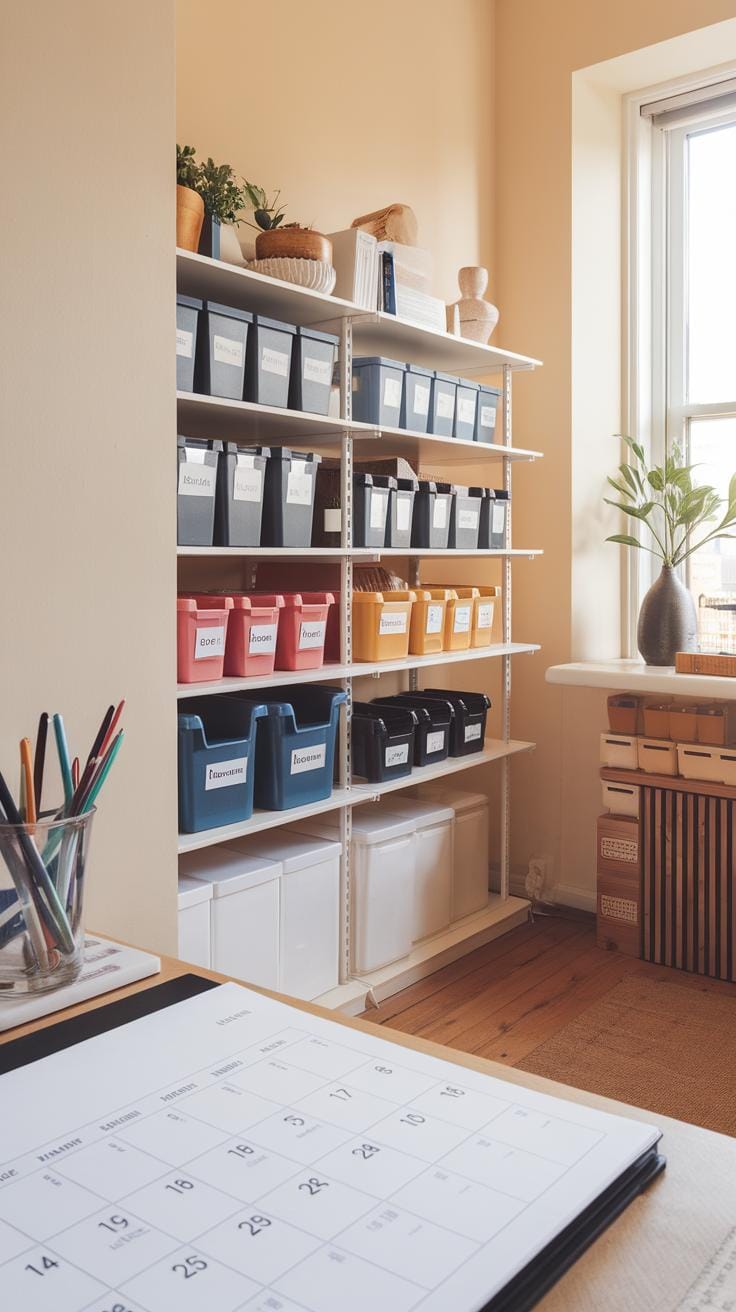Introduction
Organizing your home can feel overwhelming, but taking a few clear steps can make a big difference. How many times have you searched endlessly for a lost item or felt stressed by clutter around you? Your living space affects your daily mood and productivity. Getting organized helps create a more peaceful and efficient environment. This article explores practical hacks that you can apply room by room to reduce clutter and keep your home tidy.
Most people want more order but don’t know where to start. Are there better ways to manage your belongings? What small changes lead to lasting results? The strategies presented here cover sorting, storing and maintaining organization. They focus on simple actions that anyone can follow. With these steps, you can take control of your home and enjoy the benefits of a clutter-free space every day.
Sorting Through Your Stuff
Begin by dividing your belongings into clear groups: keep, donate, and discard. This method stops you from holding on to unnecessary items. Keep only what you use regularly or truly need.
Make quick decisions to avoid second-guessing. Ask yourself: “Will I use this again soon?” If the answer is no, move it out. Set a timer for each area to speed up the process and maintain focus.
Sentimental items require special care. Limit what you keep by deciding if an item brings real joy or meaningful memories. If it does not, consider other ways to preserve those feelings without holding onto the item itself.
You want your space to serve your daily life, not restrict it. Sorting is the first step to clear surfaces and open areas, making your home easier to organize later.
How To Decide What To Keep
Set clear rules before sorting. Ask if you have used the item in the past year or if it fits your current lifestyle. For example, old clothes that no longer fit or outdated gadgets might not belong in your home anymore.
Work in short, timed intervals to avoid feeling overwhelmed. A 15-minute timer can help you stay focused and make tidy decisions quickly. You can always come back later if needed.
Keep only what solves a problem, fits your style, or is essential to everyday life. If you hesitate more than a few seconds about an item, it’s a sign to let it go. This method saves time and prevents clutter accumulation.
Handling Sentimental Items
Memories don’t need to fill your shelves. Photograph sentimental items to keep the memory without the space. Store favorite photos or scans in a digital album you can revisit anytime.
Use a small box for truly special keepsakes. Limit this box to a manageable size to avoid hoarding. Passing items to family or friends who will appreciate them can keep memories alive without crowding your home.
Ask yourself if an item sparks joy or useful memories. Holding on to everything can block fresh starts. Focus on meaningful objects that support your present life and leave the rest behind.
Maximizing Storage Space
Using your storage wisely keeps your home tidy and makes daily routines easier. Try to think beyond standard shelves and drawers. Look up to your walls—installing shelves or sturdy hooks on empty walls and behind doors creates space for items like bags, tools, or kitchen essentials. These spots often go unused but add valuable storage.
Under furniture zones offer hidden storage too. Utilize under-bed bins for off-season clothes or shoes. These containers slide right under your bed, keeping things out of sight but within reach when needed. This keeps your closet less crowded and your floor free of clutter.
Choose furniture that serves more than one purpose. Ottomans with storage inside or beds with built-in drawers give you extra space without extra furniture. These pieces help keep your belongings organized and the room looking neat.
Using clear containers helps you see what’s inside at a glance, so you don’t waste time digging through boxes. Label each container clearly—whether by hand or with printed tags—so you can locate items quickly. Keeping similar items grouped together in labeled boxes saves effort and frustration.
Using Vertical And Hidden Spaces
Walls and doors offer prime spots for storage you might overlook. Adding shelves near your desk or in the kitchen along with hooks on doors can free up counters and closets. These additions keep items off surfaces and organized.
Under your bed, flat storage bins are perfect for storing clothes or shoes that you only use seasonally. These containers slide under smoothly and help keep your living space less crowded. Have you tried this space-saving method yet? It can make a big difference in reducing visible clutter.
Choosing The Right Storage Containers
Select storage containers that suit your needs. Clear boxes let you find things visually without opening every bin. If privacy matters, or for less-used items, opaque containers work well. Consider stackable containers to make the most of vertical space in closets or shelves.
Effective labeling turns storage from messy to manageable. When every box has a clear tag, you won’t spend time searching through multiple containers. Organize labels by category or room to speed up finding what you need. What’s your current method for keeping track of stored items? A small change here can save hours.
Creating Zones For Different Activities
Dividing your home into zones for specific activities like work, hobbies, and relaxing helps contain clutter in each space. When each zone has a clear purpose, you know exactly where items belong. This reduces the chance of leaving things scattered around.
Assign storage and furniture that fit each zone’s needs. For example, a work area needs a desk and filing system, while a hobby zone may require shelves for supplies. Seating in a relaxation zone should invite comfort and easy access to books or devices.
Setting up zones also improves the flow of your home. When spaces serve clear roles, it becomes easier to move from one task to another without distractions. How can you arrange your rooms so each zone supports your daily activities more smoothly?
Benefits Of Defined Zones
Defined zones keep related items together, which makes it less likely for clutter to build up elsewhere. When everything has a home, you spend less time searching and more time enjoying your space.
A craft corner with bins for fabric, paints, and tools keeps projects neat and ready to use. A reading nook with a small shelf and cozy chair keeps books and blankets in one spot. These examples show how zones prevent mess by gathering what belongs together.
Which areas in your home could benefit from a dedicated zone to make your routines easier and your space tidier?
Tips For Setting Up Zones
Start by thinking about the activities you do most in your home. Pick spaces that support each function well. For work, choose a quiet corner with good lighting. For hobbies, pick a spot with storage nearby.
Within each zone, group your supplies and equipment logically. Use containers or small shelves to keep items visible and handy. Label storage to find what you need quickly. Avoid mixing zones by keeping unrelated clutter out.
Test your zone setup. Does the space support the activity without distractions? Adjust placement of furniture or storage until it feels right. How will you decide what zone an item belongs to before setting it down?
Daily Maintenance Routines
Small daily habits keep your home from turning chaotic. Spending just five minutes each day tidying up can stop clutter from piling up. Before you know it, the mess won’t feel overwhelming anymore.
Putting items back immediately after use keeps spaces clear and avoids extra work later. For example, returning keys to a bowl or hanging jackets right after coming home creates order automatically.
Regularly checking for items you no longer need prevents clutter from growing. Setting a weekly or monthly time to sort through things helps you decide what to keep, donate, or toss. This habit keeps your home fresh and organized.
How often do you find items out of place that take longer to put away later? Changing small habits today can save you big cleanups tomorrow.
Five-Minute Tidy Ups
Short bursts of tidying make a big difference. Taking five minutes at the same time every day trains you to keep things under control. Setting a timer adds a clear end point and makes the task feel doable.
You can tackle simple tasks like clearing the coffee table, folding a few clothes, or loading the dishwasher. When you focus on small areas, the whole home stays neat without spending hours cleaning.
How would your day change if your home felt organized all the time? Practicing quick tidy ups can build that consistency.
Regular Donation And Trash Runs
Scheduling weekly or monthly times to clear out unwanted items helps maintain order. Mark these runs on your calendar so they become habits, not chores put off indefinitely.
Choose a day to gather clothes, books, or gadgets you don’t use anymore. Drop them off at donation centers or recycle items correctly. That prevents clutter from sneaking back in.
Do you keep items out of guilt or habit? Regular donation runs create space for what truly matters and keep your home feeling open and manageable.
Organizing The Kitchen Efficiently
Group similar items together to make your kitchen easier to navigate. Keep baking supplies in one spot and cooking oils and spices in another. This helps you find what you need fast and prevents items from crowding each other. Use drawer dividers to separate utensils and tools. This keeps your drawers tidy and stops small items from mixing up.
Label pantry containers to quickly identify ingredients. Clear containers work best so you can see when supplies run low. Labels avoid confusion and save time when cooking.
Keeping your countertops clear makes the kitchen feel bigger and cleaner. Store appliances like toasters and blenders in cabinets when not in use. Keep only daily-use items, such as a coffee maker or a knife block, on the counter. This simple habit cuts clutter and helps you focus on cooking instead of tidying.
Grouping And Labeling
Arrange kitchen items by what you use most often. Place daily essentials like coffee and tea close together for easy access. Group less used items in higher cabinets or deeper shelves. This avoids wasting time searching through clutter.
Label shelves and bins clearly. Use simple, easy-to-read labels on containers, shelves, or baskets. When everything has a clear place, you won’t hesitate to put things back, saving time and effort in the long run.
Ask yourself: How often do you reach for certain items? Organize shelves to suit your habits. This approach keeps the kitchen functional and reduces frustration.
Keeping Countertops Clutter-Free
Store appliances in cabinets unless you use them every day. Small appliances like mixers or grills can create clutter when left out.
Use utensil holders or drawer organizers to keep cooking tools off the counter. Only keep frequently used items, like a spatula or cooking spoons, within reach.
Clear surfaces make meal prep quicker and cleaning easier. When counters are free, the space feels calmer and more inviting. Could your kitchen benefit from freeing up space you didn’t realize was wasted on clutter?
Optimizing Closet Space
Organizing your closet starts with creating a clear system. Using uniform hangers gives your closet a clean look and helps you spot what you have at a glance. When every hanger matches, your clothes hang evenly, and you avoid unnecessary clutter.
Store off-season clothing in labeled bins or vacuum-sealed bags on higher shelves or under the bed. This frees up space for what you wear daily. Regularly rotate your wardrobe so you only keep current season items in easy reach.
Establish a habit of decluttering your clothes every few months. Ask yourself if you have worn each item in the last six months. If not, consider donating or selling it. A smaller wardrobe means less mess and quicker choices each day.
Uniform Hangers And Seasonal Rotation
Matching hangers provide more than style—they improve efficiency. Clothes hang better and take up less space because similar hangers align smoothly. You won’t waste minutes untangling mismatched hangers.
Off-season clothes should move to storage. Use clear bins or stackable boxes to keep them dust-free and easy to find. Mark boxes by season or type for quick access when the weather changes. This way, your closet stays less crowded and more manageable.
Shoe Storage And Accessories
Shoes need their own system to avoid piling on the floor. Choose open racks if you want quick access or clear boxes if you prefer stacking. Transparent containers help you identify shoes without digging through piles.
For jewelry and belts, small containers or drawer dividers work well. Group similar items together. Hooks on the inside of the closet door can also hold accessories neatly without taking up much space.
Think about how much time you spend searching for pairs or lost earrings. Organizing these small items saves you daily hassle and keeps your closet orderly.
Taming Paper Clutter Organizing Hacks To Declutter Your Entire Home
Paper piles often grow fast. Bills, mail, and important documents can easily overwhelm your space. To control this flood, start by sorting papers as soon as they enter your home. Create a habit of opening mail daily and deciding what needs action, what to keep, and what can be tossed immediately.
Invest in a simple scanner or use your smartphone to digitize important papers. Storing files on your computer or cloud reduces physical clutter and makes finding documents faster. Have you ever spent time looking for a warranty or tax form? Digitizing cuts down on such frustrations.
Keep a small inbox tray for temporary storage but clear it weekly. Set reminders to review files and delete digital copies that no longer serve you. This small routine prevents paper from piling up again.
Sorting Paper Efficiently
Sorting paper starts with a clear system. Choose categories that fit your life, such as bills, medical records, warranties, and personal documents. Keep labeled folders or binders for each type. Labels help you find what you need without digging through stacks.
Use color-coded folders or tabs to make sorting quick and intuitive. For example, red for urgent bills, blue for completed tasks, and green for long-term files. This visual cue helps you decide what to tackle first.
Where do you usually store your papers? Pick one spot. Avoid scattering files in different rooms. A single, visible filing station encourages better habits and stops paper from spreading.
Going Paperless When Possible
Digital tools make going paperless easier than ever. Many banks, utilities, and stores offer e-statements and digital receipts. Sign up for these services to reduce incoming paper.
Apps like Evernote, Google Drive, or dedicated document managers help organize digital copies. You can attach tags, set reminders for due dates, and search keywords instantly. This saves time spent rifling through physical files.
Try setting up automatic bill payments and notifications on your phone. Eliminating paper bills also cuts down on missed payments and late fees. What tasks could you handle completely online to clear your desk and mind?
Using Technology To Stay Organized
Technology offers practical tools to help you manage your home efficiently. Apps and digital calendars keep track of your tasks, shopping lists, and home inventory without the clutter of paper. You can update your to-do list anytime, anywhere, preventing forgotten chores or purchases.
When you use apps, you build habits that support lasting organization. For example, logging items in a home inventory app helps you know what you own before buying more. This stops unnecessary clutter from forming. Also, digital calendars let you plan cleaning schedules and set deadlines for tasks.
Have you tried using technology to keep things organized? It acts like a smart system that reminds you about what needs attention. This reduces stress and saves time by making your routines predictable and manageable. Technology creates a clear overview of your home’s needs for long-term neatness.
Best Apps For Home Organization
Several apps simplify home organization by focusing on different needs. For managing tasks, try apps like Todoist or Microsoft To Do. They let you break chores into small steps and check them off as you go. For list-making, apps such as AnyList or Google Keep work well for grocery lists and reminders.
Note-taking apps like Evernote or OneNote help you keep important information in one place. Instead of sticky notes scattered around, you can save ideas and instructions digitally. These apps cut down paper clutter and make it easier to find your notes later.
Which app fits your style? Testing a few can help you pick one that motivates you to keep organized. The key is using tools that feel simple and useful, so you actually use them every day.
Setting Reminders And Schedules
Reminders and schedules in your digital calendar support habits for regular cleaning or maintenance. Setting alerts for weekly tasks, like laundry or vacuuming, keeps you on track without needing to remember everything yourself.
Use your phone’s reminder feature to prompt you about lesser-known chores, such as cleaning the fridge or updating your home inventory. This way, these tasks don’t get pushed aside and build up.
Try blocking time for cleaning sessions in your calendar. Treat these slots like appointments you can’t miss. This consistent routine helps turn tidying into a simple habit, rather than an overwhelming job.
What would change if you had reminders that nudge you toward keeping your home orderly? Integrating timely alerts makes maintaining your space manageable and steady.
Maintaining Organization Over Time
Keeping your home organized takes ongoing effort. Your needs change, so your system should too. Regularly adjusting how you store items helps prevent clutter from building up again.
Set a reminder to review your space each month. During these checks, ask yourself which items you haven’t used recently. Donate or toss what no longer serves you. This creates room for things you truly need and use.
Look for spots where your current setup feels tight or inefficient. Could baskets, dividers, or labels make access easier? Small tweaks often save time and effort later.
Regular Reviews And Adjustments
Monthly reviews help you stay on top of clutter. Try creating a quick checklist for each room. Ask if everything still fits your routine and lifestyle.
If you notice piles forming or drawers jamming, take time to reorganize. Even shifting a few items can open up space and reduce stress.
What often gets overlooked in daily life? Try to spot those areas. Clearing out forgotten stuff regularly becomes a habit that keeps your home orderly for good.
Staying Flexible With Your Systems
Your organizing methods should move with your life. Changes like new hobbies, work schedules, or family size require fresh solutions.
Don’t hesitate to swap storage containers or room layouts when something stops working. Experiment with new hacks to find better fits for your current situation.
Ask yourself, “Have I tried all possible ways to organize this? Could another approach save time and reduce mess?” Staying open lets you avoid frustration and keeps your home comfortable.
Conclusions
Taking time to organize your home pays off with less stress and more comfort. Have you started your organizing journey yet? You can create systems that work with your lifestyle. Use clear bins, label items and keep similar things together to make finding what you need quick and easy. What organizing tip will you try first to improve your daily life?
Remember that organizing takes ongoing effort. Choose the hacks that matter most to you and fit your schedule. Regular tidying and reassessing your storage solutions prevent clutter from building back up. With patience and practice, your home can stay neat and welcoming. How will you maintain your organized space for the long term?



